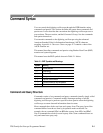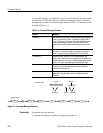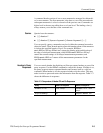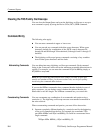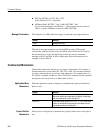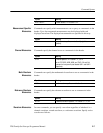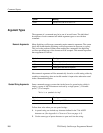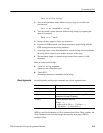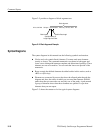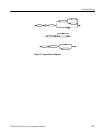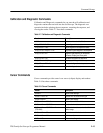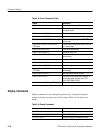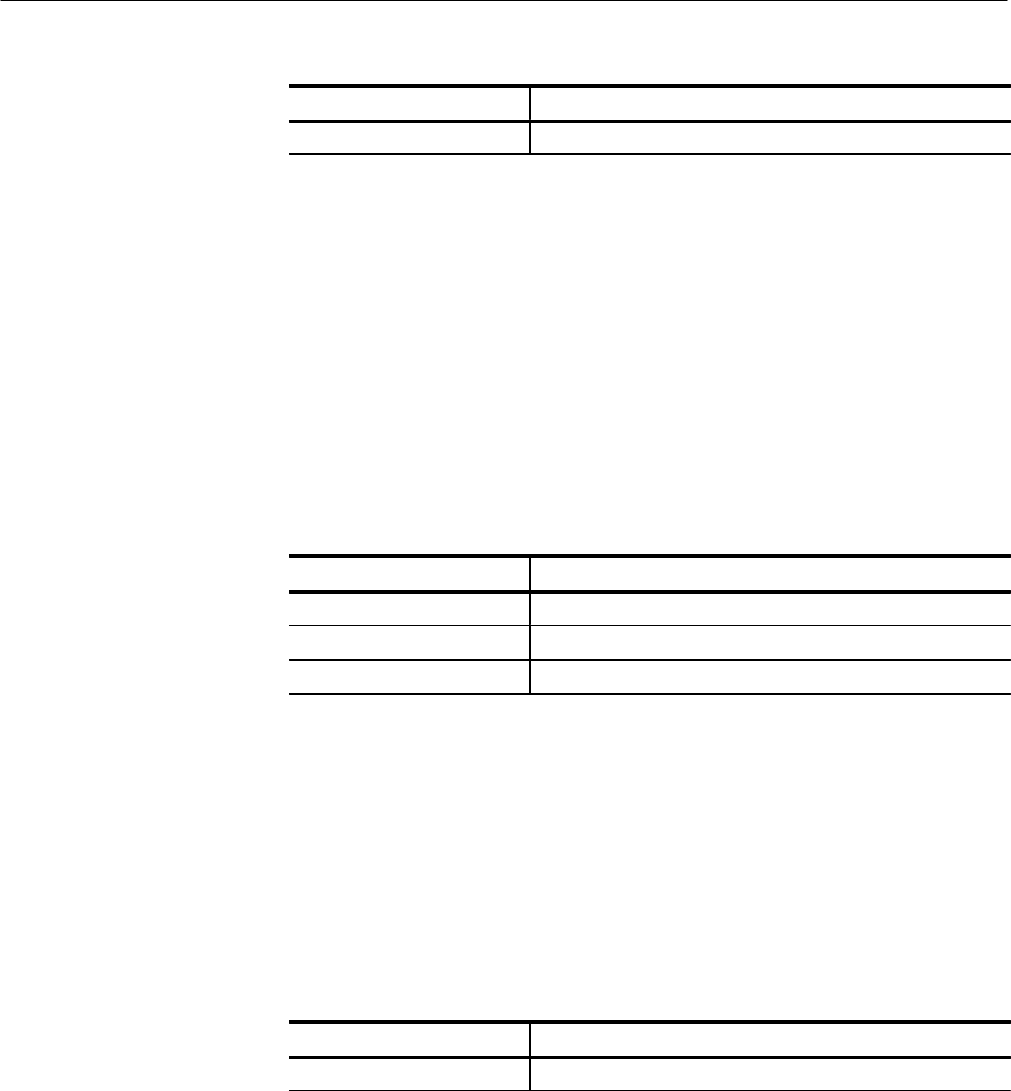
Command Syntax
2–8
TDS Family Oscilloscope Programmer Manual
Symbol Meaning
<wfm> Can be CH<x>, MATH<x> or REF<x>
Argument Types
The argument of a command may be in one of several forms. The individual
descriptions of each command tell which argument types to use with that
command.
Many digitizing oscilloscope commands require numeric arguments. The syntax
shows the format that the digitizing oscilloscope returns in response to a query.
This is also the preferred format when sending the command to the digitizing
oscilloscope though any of the formats will be accepted. This manual represents
these arguments as follows:
Symbol Meaning
<NR1> Signed integer value
<NR2> Floating point value without an exponent
<NR3> Floating point value with an exponent
Most numeric arguments will be automatically forced to a valid setting, either by
rounding or truncating, when an invalid number is input unless otherwise noted
in the command description.
Some commands accept or return data in the form of a quoted string, which is
simply a group of ASCII characters enclosed by a single quote (') or double
quote ("). For example:
"this is a quoted string"
Symbol Meaning
<QString> Quoted string of ASCII text
Follow these rules when you use quoted strings:
1. A quoted string can include any character defined in the 7-bit ASCII
character set. (See Appendix A: Character Charts on page A–2).
2. Use the same type of quote character to open and close the string:
Numeric Arguments
Quoted String Arguments




